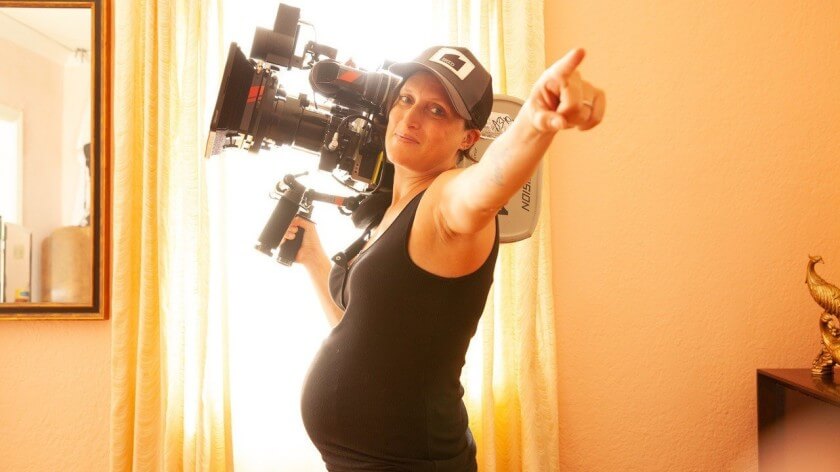According to research from the Center for Talent Innovation (CTI), the vast majority of women (85%) and
multicultural professionals (81%) need navigational support to advance in their careers but receive it less
often than Caucasian men. However, a 2010 Catalyst study revealed that more women than men have been
assigned mentors yet 15% more men won promotions. Why? The findings indicate that having more
mentorship did not lead to advancement but having a senior mentor in a position to provide sponsorship did.
What is the difference between having a mentor or having a sponsor?
In short, mentors advise you and sponsors advocate for you.
When Women Don’t Speak
Here’s the short of it: even though both men and women reported loving their groups, because of the study’s findings, the program will not put a woman alone on a team of men again.
What happens when women are outnumbered? After years spent analyzing lab and real-life settings to determine what it takes for a woman to really be heard—to truly be perceived as competent and influential—these professors have found the same truth: for women, having a seat at the table does not mean having a voice.
MGI | THE POWER OF PARITY: HOW ADVANCING WOMEN’S EQUALITY CAN ADD $12 TRILLION TO GLOBAL GROWTH
Narrowing the global gender gap in work would not only be equitable in the broadest sense but could
double the contribution of women to global GDP growth between 2014 and 2025. Delivering that impact,
however, will require tackling gender equality in society.
Women leaders, a competitive edge in and after the crisis
This report provides a perspective on several levers that could raise the priority of gender diversity and increase the efforts to achieve it within organizations. The first one is to convince the skeptics of the benefits of having more women in top management: after all, there’s still a long way to go to persuade most executive boards and male business leaders of this. The second is to make gender diversity development a priority within organizations. The third lever is the most important for long-term effectiveness: implement appropriate programs. Based on our survey and our experience of companies that are highly committed to this issue, the success of gender diversity initiatives depends above all on deploying comprehensive programs that comprise a broad range of measures. It is not enough simply to provide more flexible working conditions or career management. Reaching a critical mass of women in the top management of organizations requires a critical mass of measures, if we want to create deep-seated and sustainable change.
The Impact of COVID-19 on Gender Equality
The economic downturn caused by the current COVID-19 outbreak has substantial implications for gender equality, both during the downturn and the subsequent recovery. Compared to “regular” recessions, which affect men’s employment more severely than women’s employment, the employment drop related to social distancing measures has a large impact on sectors with high female employment shares. In addition, closures of schools and daycare centers have massively increased child care needs, which has a particularly large impact on working mothers. The effects of the crisis on working mothers are likely to be persistent, due to high returns to experience in the labor market. Beyond the immediate crisis, there are opposing forces which may ultimately promote gender equality in the labor market. First, businesses are rapidly adopting flexible work arrangements, which are likely to persist. Second, there are also many fathers who now have to take primary responsibility for child care, which may erode social norms that currently lead to a lopsided distribution of the division of labor in house work and child care.
The Remote Work Report by Zapier
Will the office be obsolete by 2030? Knowledge workers think so.
About three-quarters of knowledge workers would be willing to quit a job that didn’t allow remote working for one that did.
Companies looking to attract and retain talent should think about their remote work policies. 95 percent of U.S. knowledge workers want to work remotely, and 74 percent would be willing to quit a job to do so.
Women value remote work more than men, but are less likely to have the opportunity.
62 percent of female knowledge workers say the option to work remotely is one of the perks they would most want an employer to offer, as opposed to just 53 percent of male knowledge workers. And yet there are significant gender disparities: 40 percent of female knowledge workers say they don’t work remotely because their company doesn’t allow it, compared to 25 percent of men of the same group saying the same thing.
Hollywood working moms and the brutal conflict between family and career
Nearly every mother in Hollywood has a horror story.
There was the time screenwriter and showrunner Aline Brosh McKenna was 8½ months pregnant and a studio executive joked, “I guess today would be a bad day to punch you in the stomach.” There was the time Nisha Ganatra, director of the upcoming Mindy Kaling film “Late Night,” went on a scouting trip to India when she was a new mom and found herself driving around the country in a van “with 15 dudes,” pumping breast milk in “a woodshed in the middle of a desert and an outhouse behind a restaurant.” There was the time a dream job offer fell through for Oscar-nominated “Mudbound” cinematographer Rachel Morrison because producers panicked that she’d be going back to work a few weeks after giving birth — something she was willing to do to help realize one of the most exciting scripts she had ever read. The experience, she says, “made me acutely aware of the prejudices in this industry, specifically in my line of work.”
This Computer Was an Astronomy Star: Charlotte Moore Sitterly
Computer used to be a job title, referring to a person who performed calculations on behalf of higher-ups who didn’t want to churn through data for hours or weeks at a time. In the early 20th century, most computers were women. (In the 1940s, one wag suggested we use the term kilogirl as a measure of digital computing power, where one kilogirl equals 1,000 hours of labor.) In 1920, a 22-year-old named Charlotte Moore, after dazzling the mathematics department at Swarthmore College, joined Princeton’s Department of Astronomy as a computer. She rose to astronomy’s highest ranks, a solar specialist who published five monographs and more than 85 papers.
‘An Educated Lady’ Gets the Job: Anne Shaw
Anne Shaw spent only four years at the College of New Jersey, but her short employment signified an important shift in the makeup of Princeton’s staff.
Hired in 1877 as the assistant to the librarian, Frederic Vinton, Shaw is believed to be the first female employee to fill a non-service role on campus. That also made her one of about only 15 percent of American women who worked for pay in the 1870s.
How I Made It: As head of the L.A. Chamber, Maria Salinas is getting down to business
Source: Los Angeles Times April 3, 2019 It took 130 years for the Los Angeles Area Chamber of Commerce to name a woman or a Latino to the helm, but Maria Salinas’ collegial and inclusive style got her the job last year. It took 130 years for the Los Angeles Area Chamber of Commerce to hire a woman and a …










